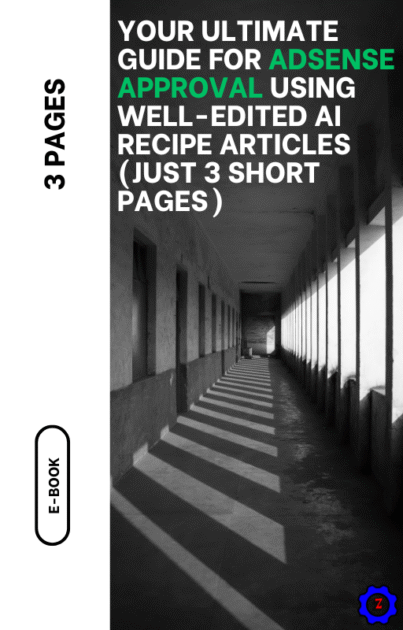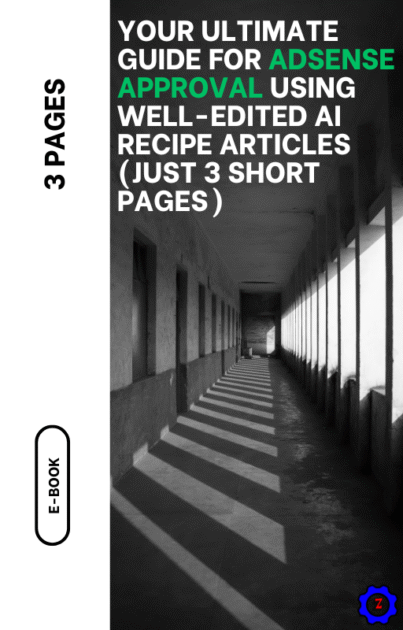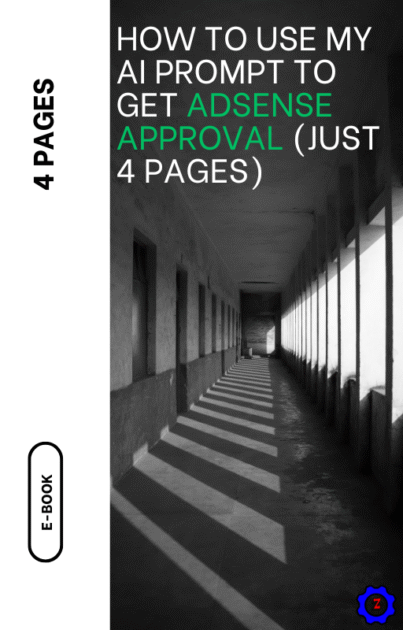Affiliate Disclosure
The owner of https://ozozeasy.com may receive compensation for recommendations made in reference to the products or services on this website. Read more…
The Truth About AdSense & AI: How Well-Edited Content Gets Approved
The rise of AI content creation has sent shockwaves through the online publishing world, especially for those seeking Google AdSense approval. A critical question dominates: “Will AdSense accept websites using AI-generated content?”
The answer isn’t a simple yes or no. Google doesn’t inherently reject AI. What AdSense fundamentally requires and what it rigorously evaluates is high-quality, valuable content that serves users well. This is where the crucial qualifier “well-edited” comes in. Raw AI output rarely meets AdSense’s stringent standards. However, strategically leveraging AI as a drafting tool and then applying rigorous human editing creates content that absolutely can gain approval. Here’s how and why:
Google’s Stance: Quality Reigns Supreme

Google’s official guidance consistently emphasizes content quality, not its origin. Their focus is on:
- Helpfulness & Value: Does the content genuinely answer a user’s query or solve a problem better than alternatives?
- Originality & Insight: Does it offer unique perspectives, analysis, or value beyond simply aggregating existing information?
- E-A-T (Expertise, Authoritativeness, Trustworthiness): Does the content demonstrate knowledge? Is the source credible? Is the information accurate and reliable?
- User Experience (UX): Is the content well-organized, readable, and presented on a functional, trustworthy-looking site?
Why Raw AI Often Fails the AdSense Test
Straight-out-of-the-box AI content frequently exhibits flaws that trigger AdSense rejections:
- Generic & Bland: Lacks unique voice, personal insight, or specific expertise. Feels mass-produced.
- Surface-Level & Thin: Provides basic information but lacks depth, practical tips, unique angles, or comprehensive answers.
- Repetitive & Predictable: Uses formulaic language and structures easily flagged as artificial.
- Factual Inaccuracies & Hallucinations: AI can confidently state false information, undermining trustworthiness (E-A-T).
- Poor Readability: Can be overly verbose, lack logical flow, or miss crucial subheadings and formatting.
- No Demonstrable E-A-T: Fails to show why the author/site is qualified to speak on the topic.
The Winning Formula: AI Draft + Human Editor = AdSense-Worthy Content
NOTE: Based on my experience, I just add my opinion to the article; I think 3-4 times per article will be enough. That helps to categorize your content as original and unique.
This is where “well-edited” transforms AI from a liability into a powerful asset. The goal isn’t just minor proofreading; it’s substantial value addition and transformation. Think of AI as a fast, first-draft assistant, and the human editor as the quality controller, expert, and personality infuser.
What “Well-Edited” Means for AdSense Success:
1. Injecting Unique Voice & Personality:
Replace robotic phrasing with natural, engaging language.
Add brief, relatable anecdotes, opinions, or context (“Based on my experience testing 10 variations…”).
Develop a consistent tone for your site.
2. Adding Significant Value & Depth:
Expand: Go beyond the AI’s basic points. Add detailed examples, case studies, or step-by-step breakdowns.
Provide Practical Tips & Variations: Offer “pro tips,” troubleshooting advice, alternative methods, or customization options the AI missed.
Include Original Insights: Share your own observations, analysis, or conclusions based on the topic.
Enhance Comprehensiveness: Ensure the content truly answers the user’s likely questions fully.
3. Strengthening E-A-T (The Critical Pillar):
Demonstrate Expertise: Add specific, accurate details that show knowledge. Explain why something works. Cite sources for claims where appropriate.
Build Authority: Ensure factual accuracy by rigorously fact-checking AI output. Correct hallucinations. Use precise terminology.
Establish Trustworthiness: Be transparent where needed (e.g., “Nutrition info is approximate”). Include clear safety warnings (e.g., recipes, financial advice). Have a clear “About Us” page establishing your site’s purpose and, ideally, your relevant background/interest.
4. Optimizing Readability & Structure:
Break up text with clear subheadings (H2s, H3s).
Use bullet points, numbered lists, and short paragraphs.
Ensure logical flow and smooth transitions.
Incorporate relevant, high-quality images/videos with descriptive alt text.
5. Ruthless Quality Control:
Proofread Meticulously: Eliminate all typos, grammatical errors, and awkward phrasing. Read aloud.
Ensure Originality: Run the final edited version through plagiarism checkers. While AI drafts are original, ensure your edits haven’t inadvertently copied phrasing.
Check for Accuracy: Verify facts, figures, names, dates, and instructions.
Beyond the Content: Essential Site Foundations
AdSense evaluates your entire site, not just individual articles. Well-edited AI content sits within this crucial framework:
- Professional Design & UX: Use a clean, fast-loading, mobile-responsive theme. Avoid intrusive ads (pre-approval) or clutter. Easy navigation is key.
- Essential Pages:
About Page: Explain who you are/your site’s mission (builds E-A-T).
Contact Page: A clear way for users (and Google) to reach you.
Privacy Policy & Terms of Service: Legally required. Use generators but tailor them. - Technical Health: SSL Certificate (HTTPS) is mandatory. Ensure fast loading speeds and avoid technical errors.
- Clear Site Structure: Organize content logically so users and Google can easily find it.
- Content Volume (Initially): While 3 exceptionally well-edited cornerstone pieces (like our recipe example) can work, having 10-15 high-quality pieces is often a safer starting point, showing consistent effort. Quality over quantity always applies.
Applying with Well-Edited AI Content: Best Practices
- Build First, Apply Later: Don’t apply immediately after publishing. Let Google index your content (2-4 weeks minimum). Show some initial organic traffic if possible (share ethically).
- Focus on Your Best: Ensure your core “well-edited” pages are easily discoverable and represent your site’s quality.
- Be Honest (But Don’t Over-Explain): AdSense doesn’t currently ask, “Did you use AI?” Focus on accurately describing your site’s topic and content value in the application. Your content’s quality should speak for itself.
- Patience is Key: Reviews take time (days to weeks). Don’t resubmit repeatedly without making significant improvements.
Why This Strategy Works: Aligning with AdSense’s Core Mission
Well-edited AI content aligns perfectly with what AdSense seeks:
- High User Value: The editing process focuses on making the content genuinely helpful and comprehensive.
- Originality & Uniqueness: Human editing injects perspectives and value absent in the raw AI output.
- Strong E-A-T Signals: Rigorous editing for accuracy, expertise demonstration, and transparency builds trust.
- Positive User Experience: Well-structured, readable content on a professional site keeps users engaged.
The Future & Responsible Use
Google’s algorithms and policies constantly evolve. While well-edited AI content is viable now, transparency (like subtle disclosure) might become more important. The core principle remains unchanged: prioritize exceptional user value above all else. AI is a tool; the human editor is the craftsman ensuring the final product meets AdSense’s high bar.
Conclusion:
Google AdSense does not automatically reject AI-generated content. It rejects low-quality content, a category much raw AI output unfortunately falls into. The path to approval lies in harnessing AI’s efficiency for drafting, then investing significant effort in human-led editing that adds substantial value, originality, expertise, and polish. By focusing on creating genuinely helpful, well-structured, and trustworthy content that demonstrates E-A-T, presented on a professional website, publishers leveraging well-edited AI content can successfully navigate the AdSense approval process. The key isn’t avoiding AI; it’s mastering the art of transforming its output into something truly valuable for users.

